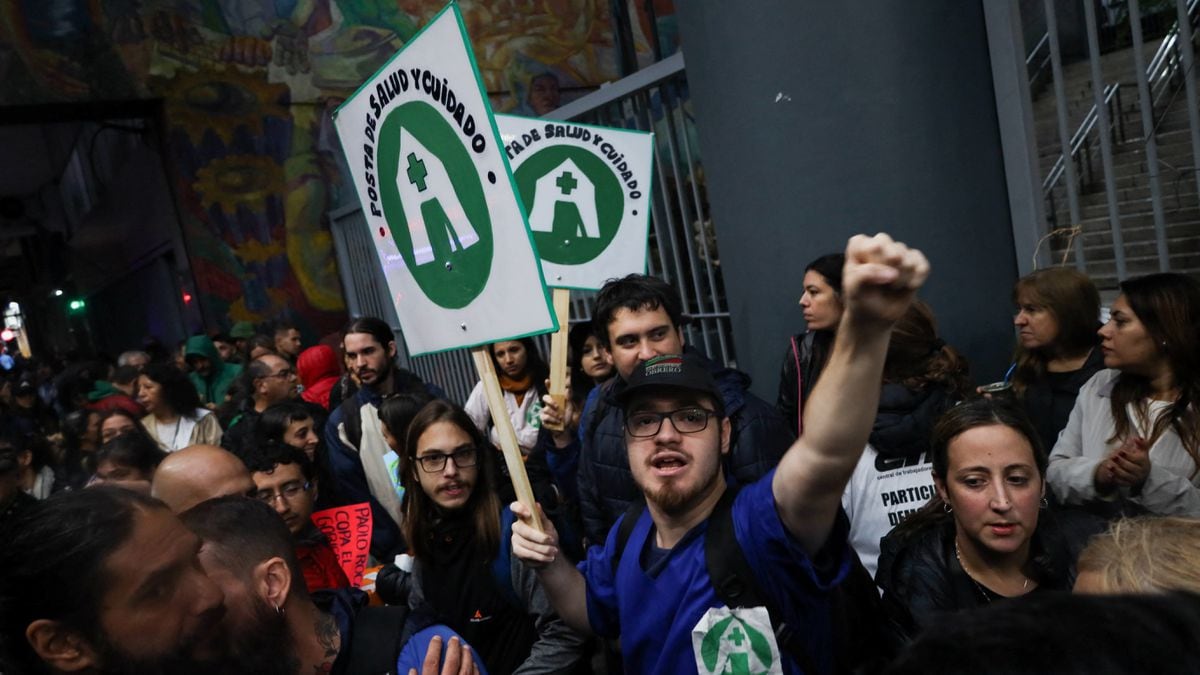"In Corona, workers chased me - today there is work, but there are no workers"
Where did the service workers go?
The employers claim that even increased wages do not attract employees, others blame the corona virus and maybe these are the new standards of a generation entering the labor market?
The fact that this is a global problem does not comfort anyone
Tali Goldstein
16/09/2022
Friday, September 16, 2022, 00:43
Share on Facebook
Share on WhatsApp
Share on Twitter
Share by email
Share in general
Comments
Comments
Where did the service workers go? (Photo: ShutterStock)
Kim Kardashian: "Move your ass and start working"
In an interview she gave to the "Variety" website a few months ago, Kim Kardashian was asked to give one piece of advice to women who want to succeed in the business world: "Move your ass and start working," she said, adding, "It seems that nobody wants to work these days."
Kardashian is not alone: this statement has been heard repeatedly in recent months from frustrated employers who are unable to recruit employees, especially in the service sector and the restaurant and hospitality industry.
Elad Dor, the owner of the "Shishko" restaurant in Tel Aviv
, was recently forced to close one of the most profitable shifts of the week - Saturday at noon.
He doesn't do this because of renovations or because he decided to keep Shabbat, but because he doesn't have enough waiters to serve the amount of customers who come on Shabbat.
"I don't remember a time like this," he tells Walla.
"Recently there has been some relief in terms of waiters, but I still suffer from a shortage. I don't understand where they have gone. Many people did leave Tel Aviv because of the cost of living, some left the industry because of the uncertainty, some because of the danger, especially during the Corona period, but the news is The bottom line is the branch that gives the most cash at the end of the day. I'm willing to pay the waiters 75 shekels an hour, and they reject that too. It sometimes forces me to close the bar outside, because I don't have any waiters."
According to Dor, the shortage of waiters he is dealing with is nothing compared to the shortage of dishwashers and cooks.
"Cooks have to go through training. I pay them for two weeks of apprenticeship, and then they leave. I pay for training 55-60 shekels an hour and for work 70-90 shekels, which adds up to tens of thousands of shekels a month that I spend on training, in vain. The workers use force which they have now, but there is a limit to how much I can raise the salary, because there is a limit to raising the prices of dishes before I start losing customers, and in addition, I am dealing with inflation. During Corona, workers chased me, now there is work, but there are no workers."
"The shortage of waiters is nothing compared to the shortage of dishwashers and cooks" (Photo: ShutterStock)
Another continent, similar troubles
In the United States, too, companies are facing an unprecedented challenge in trying to find enough workers to fill the open positions.
According to a new report from the US Department of Commerce, there are 10 million open jobs in the United States - and six million unemployed.
This shortage affects all sectors.
"Even if every unemployed person in the country found a job, there would still be four million open jobs," the report said.
In the global economy, the phenomenon is defined as a "shortage of workers", but according to
Gordon Leifer, a political economist who served as a senior advisor for labor policy under the Obama administration
, this definition is incorrect and is intended to cover up the truth.
"The first thing to understand is that there is no shortage of workers," he tells Walla and Maariv.
"When employers don't pay enough, they call it a ``shortage.'' They won the lottery," he says.
So where are all those workers?
Leifer, a professor at the University of Oregon's Labor Education and Research Institute, admits that he, too, does not have a satisfactory answer for the extraordinary situation.
"I don't know exactly the reason for the workers' behavior. One of the most interesting questions in the United States today is how everyone lives. During the Corona virus, for example, the government paid high unemployment payments. There were aid packages and tax breaks. But that ended a year ago," he says.
"In addition, if a decade ago it was possible, for example, to live a more modest life outside the city centers, to earn ten thousand dollars a year, and that was enough, today it is not possible in light of the rising cost of living and inflation, so that is not the answer either," he adds.
good to know (in advance)
The swimming method that will change your life (and make you fit)
Served on behalf of TI SWIM
33% of women: the need to take care of children or other family members makes it difficult to return to work. (Photo: ShutterStock)
More jobs, less workers
According to the report of the American Chamber of Commerce, at the height of the epidemic, more than 120 thousand businesses were temporarily closed, and more than 30 million Americans were laid off.
Since January 2020, job vacancies have increased consistently while unemployment has decreased at a slower rate.
In total, in 2021, employers added 3.8 million jobs, but at the same time, millions of Americans began to leave the labor market even before that.
This created a situation where compared to February 2020, there are now three million fewer workers in the labor market.
Today, the labor force participation rate in the United States is 62.1%, compared to 63.3% in February 2020, the report said.
It is clear that many workers prefer to stay at home rather than return to the labor market.
why?
According to the survey, 33% of women said that the need to stay at home to take care of children or other family members makes returning to work difficult or impossible at all.
28% of men said that the sector in which they worked had not yet recovered, or that there were not enough good jobs left.
In addition, some of those surveyed said that they are still afraid of the corona in the workplace.
According to the report, during the pandemic, jobs that required physical arrival at the workplace and customer service jobs that traditionally pay less, had difficulty retaining employees.
For example, the hospitality, leisure and retail industries have recorded the highest layoff rate since November 2020 – more than 4.5% consistently.
When you look at the current shortage of workers in various industries, you can see that the sectors of transportation, health and welfare, as well as hospitality and food register a higher number of vacancies.
What are the factors that contribute to the lack of workers?
Professor Gordon Leifer (photo: Public Relations)
Corona concerns
A population group that was significantly affected by the plague was that of working parents.
The closing of schools and kindergartens led to some parents having to leave their jobs to take care of the children who were left without a framework.
Others were laid off during the pandemic.
It may be that not all parents have returned to the labor market or that some of them are looking for a new job, which can explain part of the phenomenon.
In the United States even before the epidemic, the lack of access to affordable but high-quality care for children had already become a serious problem.
A study by the United States Chamber of Commerce Foundation found that due to the disruptions in the child care system, the states of Alaska, Arkansas, Arizona, Missouri and Texas lost an average of 2.7 billion dollars in revenue each year due to this problem.
A joint report by the Chamber of Commerce and the Education Fund showed that the pandemic has created a vicious cycle in the industry: to return to work, workers need proper and reliable care for their children, but care providers face enormous challenges themselves.
The epidemic has forced many suppliers to close their doors or reduce employees: in February-April 2020, the industry lost 370 jobs - 95% of which were filled by women.
The recovery of the sector is slow;
As of September 2021, the employment rate in the childcare sector was 10% lower than the pre-pandemic level.
In addition, the percentage of women's participation in the labor market dropped during the pandemic to a low level not seen since the 1970s.
As of spring 2020, 3.5 million mothers left their jobs.
The percentage of working mothers dropped to 55% compared to 70% before.
That number is improving but still not back to normal, two years later.
The percentage of women in the labor market fell during the corona virus to an unprecedented low (Photo: ShutterStock)
The workers accumulated savings
The higher unemployment payments during the corona, the relief checks and the stay at home led to Americans in total adding $4 trillion to their savings accounts since the beginning of 2020. A few hundred extra dollars a week from the higher unemployment payments (which ended in September 2021), led to six 68% of unemployment recipients Earned more during unemployment than when working.
Leifer points out that some of those workers who did not return to the labor market may have moved to live with friends or back with their parents.
Additionally, some couples apparently decided they could live on one salary.
The survey by the Chamber of Commerce shows that 28% of women said that there are other people in the family who earn enough money, so that there may not be a need to work full-time as well or to rush back into the labor market.
early retirement
- Another factor for the lack of workers is also related to the corona epidemic.
According to the Chamber of Commerce report, as of October 2021, three million adults have been pushed into early retirement.
Overall, the number of adults aged 55 and older who left the labor market due to retirement increased from 48.1% in the third quarter of 2019, to 50.3% in the third quarter of 2021.
New businesses
- some workers who left work or chose to remain unemployed did so to start their own business.
In the last two years, about 10 million applications for new businesses were filled in the United States;
In 2020 alone, 4 million new businesses were opened.
Haltura economy
- The haggling economy (or by its pretentious name, the direct economy) is one of the causes of the lack of workers in the service sector.
Millions of people now prefer to work as freelancers for a food delivery company like Volt, or a ride-sharing company like Uber outside of Israel, due to the unprecedented flexibility these jobs provide - even if it comes at the expense of benefits such as pension provision, health insurance, and so on.
The haggling economy also made it possible for many who worked in the service sector to get decently drunk in the midst of the corona epidemic, when many businesses in the field laid off workers or closed altogether.
According to a study by Edelman Data and Intelligence, in 2021, freelancers made up 36% of the workforce in the United States.
51% of the freelancers had advanced degrees.
44% of freelancers said they made more money at their job than when they were working full-time.
For some, the job even became the only or the main source of income.
According to estimates, working as a freelancer will become even more common in the coming years.
According to the "Statista" website, 90.1 million Americans will be freelancers in 2028 - more than 50% of the workforce.
"Millions of people now prefer to work as freelancers for a food delivery company like Volt" (Photo: ShutterStock, ShutterStock)
The restaurant will not recover?
According to the "Quartz" website, employment in the food and hospitality sectors in the United States may never recover.
These industries still suffer from a shortage of 1.2 million workers compared to the level in February 2020.
According to Leifer, "The situation is probably partly due to the corona epidemic and its ongoing consequences. But the more likely possibility is that the wages offered now are too low for people who were more exposed to corona, people who worked in the service sector in supermarkets or in restaurants and risked their lives, and now they are not ready to settle for the salary offered."
Leyfer also does not attach much importance to the unprecedented expansion of the pawnshop economy in the last two years, which he says is getting overexposure in the media - a large part of which is based on freelancers.
According to him, "In the United States, the alternative to jobs in the service sector is not jobs in the scrap economy.
The data does not support this.
Not all former waiters currently work in the halitura economy, nor all flight attendants or chambermaids and so on.
The haltura economy is very concentrated in certain sectors and in the rest of the sectors, there is simply a lack of workers."
In the United States, wages in industries that currently struggle to recruit workers - such as restaurants and hospitality - have been gradually increasing in recent months, according to the "Insider" website. However, it is still low compared to other sectors. According to William Spriggs, professor of economics at Harvard University, "workers in these industries are looking for ways to get jobs in other sectors" that offer higher wages or better conditions.
Leifer believes that something has happened in the last three years: "from the reluctance to work due to aid money in the midst of the pandemic, to understanding that there are ways to earn money even when everything is closed and to the decision that it is possible to be satisfied with one salary - the employees decided that the main thing is not to return to the traditional labor market.
"Now that the corona has disappeared from our lives, and with it the claim about the danger inherent in jobs in the service sector, employers have one option: pay more and improve the conditions - and people will come to work for you. The labor market has changed, employees have more power and employers will have to pay more or give employees greater control More hours, the possibility to work from home and so on. Bottom line, if there is a shortage of workers, the answer is always wages, working conditions or a combination of the two."
"The workers decided that the main thing is not to return to the traditional labor market" (Photo: ShutterStock)
Of money
Tags
Working
are unemployed
Jobs
Vacancies
Recruitment
Working
unemployment







/cloudfront-eu-central-1.images.arcpublishing.com/prisa/NVCGHMXVDVBH5DZV3GAEUUXFZM.jpg)

